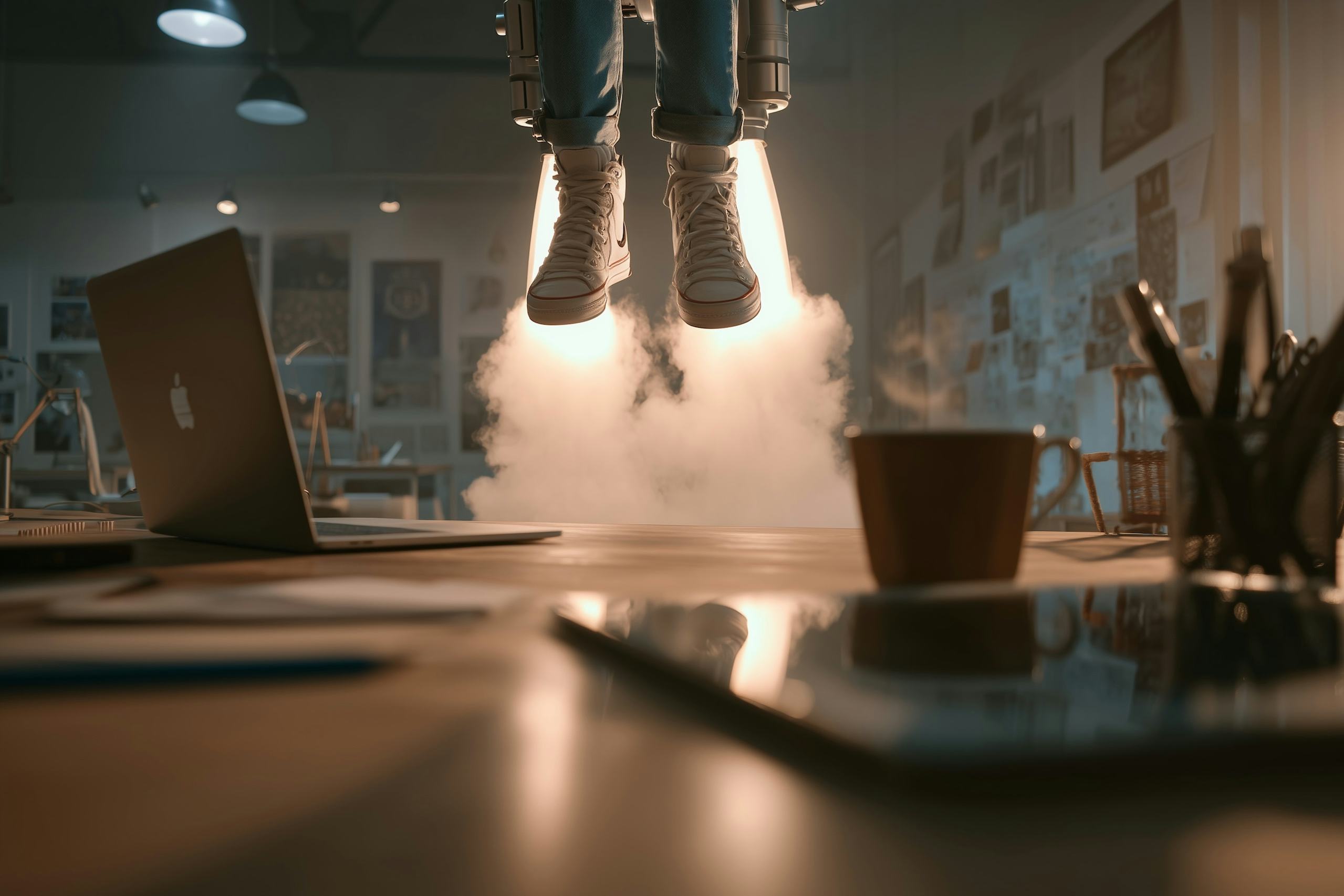“A Practical Guide to Harnessing AI for Design Work”
Most designers are grappling with how best to use AI in their creative process. Matt Sanders suggests a simple method to ensure it's used to its full potential, and responsibly.

The creative industry stands at a crossroads. Generative AI has crashed onto the design desk with promises of instant solutions and creative acceleration, yet many brands risk mistaking that initial lift-off for a finished flight.
What really happens after the first prompt? The reality is relentless iteration, sharp art direction, and the disciplined craft that keeps brand stories authentic.
This isn’t another piece about AI replacing designers. It’s about what happens when the technology meets the messy, nuanced world of brand building.
How do we harness machine velocity without abandoning the soul of our work? How do we distinguish between AI as a creative multiplier versus a creative crutch?
The answer lies not in avoiding these tools, but in learning to wield them with the same intentionality we bring to every other aspect of our craft.
The reality check
Generative AI has landed like a jet-pack, launching us from blank canvas to visuals in seconds. But treating that first barrage of images as campaign-ready art trades hard-earned equity for a fleeting gimmick. Anyone who has driven Midjourney or Runway knows the dirty secret – good results are easy; the right results are hard.
The promise of instant output is seductive, especially under time and budget pressure. Yet prompt after prompt, you tweak perspective, palette, focal length, iterating with the same patience you once spent retouching and sketching storyboards.
Craft has merely moved upstream into language.
Think of these models as the fastest intern you’ve ever hired: brilliant at churning variations, clueless about nuance.
Your value lies in knowing when to brief, when to redirect, and when to say, “Thanks, I’ll take it from here.” The danger is treating AI imagery as a cheap replacement for discipline – polished at a glance, generic on inspection, eroding the authenticity that is modern branding’s currency.
Introducing the EDEN Loop
- Explore: Wild ideation – hundreds of frames in minutes to map the creative landscape.
- Diagnose: Force a critical eye. Do these images capture the brand’s emotional territory? Are they culturally sensitive?
- Elevate: Bring human hands back to the controls, retouching anatomy, integrating brand elements, building in craft.
- Nurture: Put work in front of real people, iterating until it triggers the intended feeling.
Knowing when not to use it
AI excels at texture, atmosphere, and rapid iteration. It struggles with precise storytelling beats – authenticity, empathy and subtle cultural references. If the narrative hinges on a single expression or mandated element, bespoke illustration or traditional photography may still be safer, and ultimately more authentic.
Part of professional judgment is scanning the brief, and deciding whether velocity will compromise veracity.
Safeguarding emerging talent
My biggest concern is the graduate who masters the prompt before design theory. We risk breeding a generation fluent in generating “cool” images, yet unaware of kerning, hierarchy, or brand narrative.
Design leaders must insist juniors sketch, ideate, and art-direct alongside experimenting with AI tools. Dual fluency is where the magic, and future employability, lies.
Essential guidelines
- Write prompts like a director. Think lens, lighting, emotion, era, texture. The richer the brief, the fewer wasted iterations.
- Layer your tools. Use AI to get partway there, then add finesse from Photoshop, Illustrator, After Effects. Make it work across touchpoints.
- Budget for craft. Allow for post-AI refinement – that’s where distinctiveness is forged.
- Define an ethical ‘no-AI’ zone. Reserve sensitive roles – diverse human models, authentic voice talent, culturally rooted illustrators – for real people. Use AI to accelerate ideation, not erase lived experience.
The choice ahead
The generative revolution isn’t coming, it’s here. The question isn’t whether to engage with these tools, but how to engage thoughtfully. Agencies and marketers who embrace the EDEN loop, budget for craft, and resist the shortcut temptation will find significant competitive advantage.
As models evolve, the gap between raw AI output and finished craftsmanship will shrink, but not disappear.
Brand storytelling lives or dies on subtleties algorithms can’t yet intuit – context, irony, and cultural undercurrents. Designers who learn to wield AI as a multiplier of imagination, rather than substitute, will set the pace for the next creative decade.
The brands that thrive will use AI to amplify human creativity, not replace it. They’ll understand that while machines can generate infinite variations, only humans can choose the right one.
In an increasingly automated world, human judgment becomes not just valuable, it becomes irreplaceable.
The jet-pack is powerful, but the destination still requires a pilot. Make sure you’re the one holding the controls.
By Matt Sanders - head of design at House 337.
Source: Design Week UK
